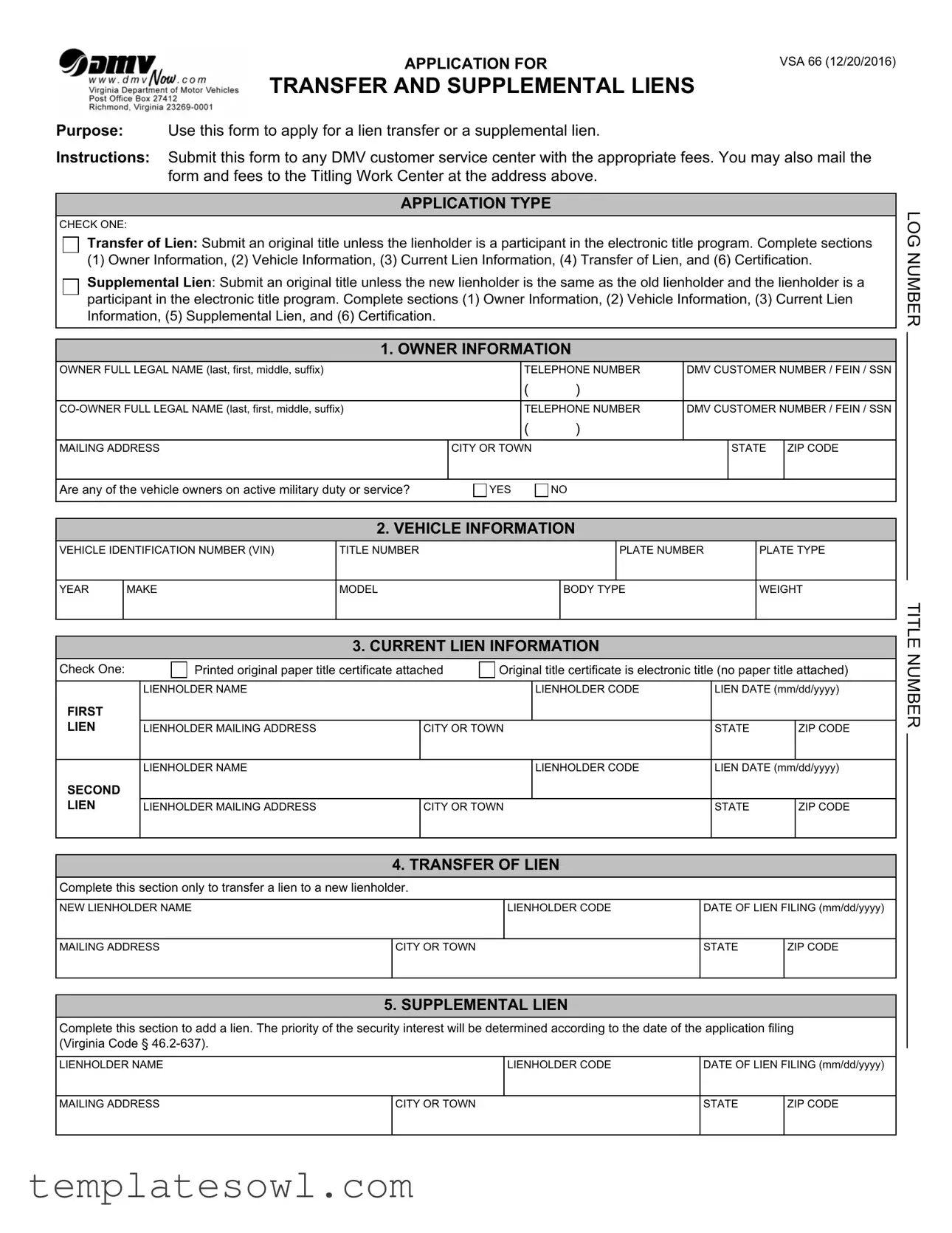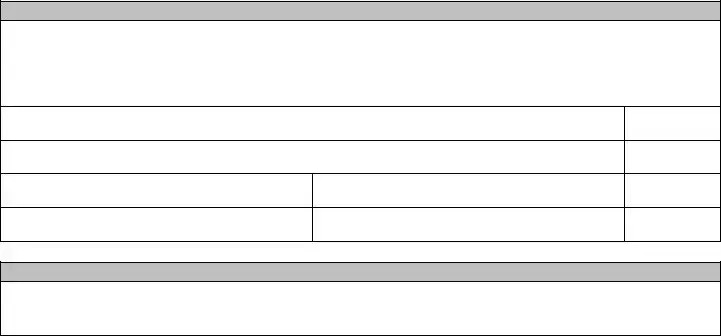What is the purpose of the VSA 66 form?
The VSA 66 form is used to apply for a transfer of a lien or to add a supplemental lien on a vehicle. This form is essential for ensuring that all lienholder information is accurately recorded by the Department of Motor Vehicles (DMV). Completing this form correctly can help protect the interests of both vehicle owners and lienholders.
How do I complete the VSA 66 form?
To complete the VSA 66 form, you will need to gather specific information related to the vehicle and the lienholders. First, check the appropriate box for the type of lien application you are making—either a transfer of lien or a supplemental lien. Then, fill out the sections that ask for owner information, vehicle details, current lien information, and the new or supplemental lienholder data. Don't forget to provide your signature and the date at the bottom of the form.
Where do I submit the VSA 66 form?
You can submit the completed VSA 66 form at any DMV customer service center. It’s also possible to mail the form, along with the required fees, to the Titling Work Center. Make sure you send it to the correct address. If you choose to submit it in person, bringing the appropriate title documents will help expedite the process.
Are there any fees associated with filing the VSA 66 form?
Yes, there are fees that accompany the VSA 66 form. The specific amount will depend on your locality and the type of application (transfer or supplemental). It’s advisable to check the DMV’s website or contact your local office for detailed fee information to ensure you provide the correct payment when submitting the form.
What happens if I provide incorrect information on the VSA 66 form?
Providing incorrect information on the VSA 66 form can lead to delays or complications in processing your application. In some cases, it may result in the form being rejected altogether. The form contains a certification section where you affirm the accuracy of the information. Misrepresenting details may also have legal consequences. To avoid issues, double-check all entries before submission.


